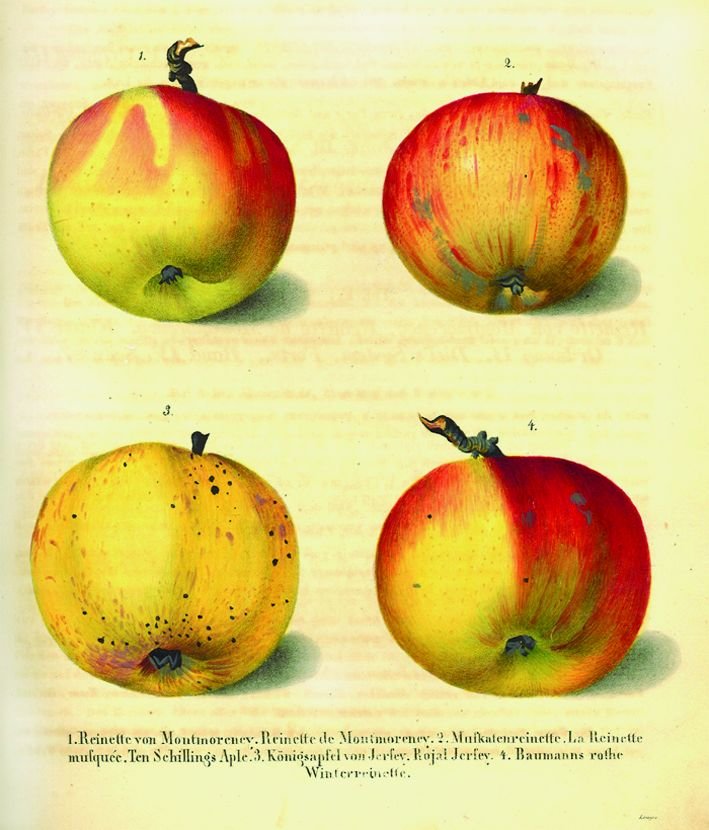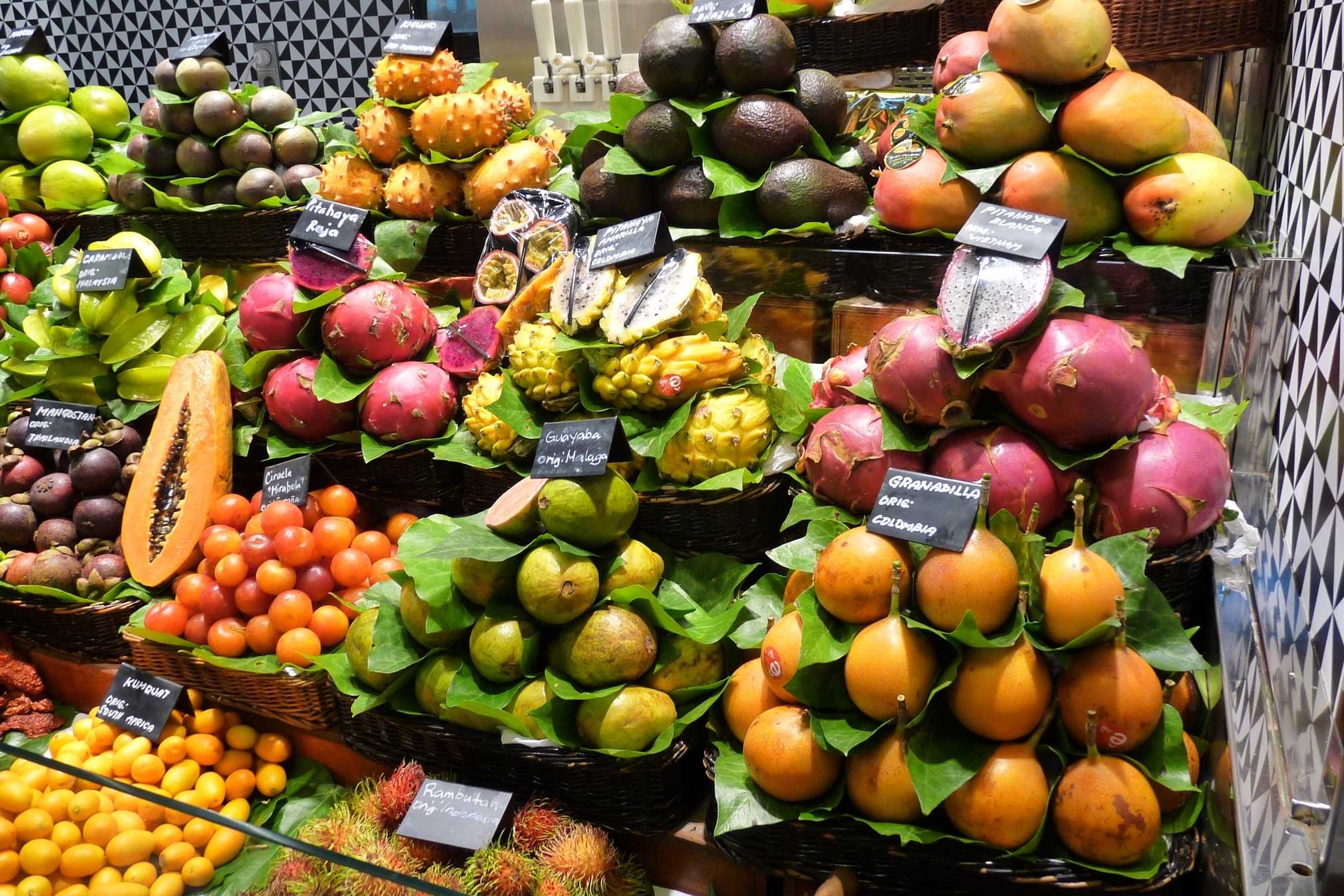Pomology, a branch of horticulture, stands as a science dedicated to the study of fruits and the art of their cultivation. Its significance in our agricultural and culinary landscapes cannot be overstated. By unraveling the mysteries of fruit-bearing plants and their cultivation, pomologists contribute substantially to our understanding of the natural world.
Pomologists, the diligent scientists, and cultivators in this field, play a crucial role in enhancing our knowledge of fruit trees and the fruits they bear. They tirelessly work to ensure the health and productivity of orchards, promoting the growth of luscious and nutritious fruits that enrich our diets and cultures.
The world of pomology beckons with its rich tapestry of fruit varieties, each with its unique flavors, textures, and uses. Beyond mere sustenance, fruits hold cultural significance, often appearing in rituals, celebrations, and traditional dishes. Understanding the intricate science and practices of fruit cultivation allows us to appreciate the bountiful gifts of nature that grace our tables year-round.
The Diversity of Fruits
Fruits are nature’s delightful gift, offering a wide array of flavors, colors, and textures. Within the realm of pomology, the study of fruits and their cultivation, one encounters a remarkable variety that reflects the richness of the natural world.
Varieties of Fruits
- Apples and Pears
Apples and pears, known for their crispness and sweetness, are among the most beloved fruits. Apple varieties range from the classic red and green to heirloom types, each with its unique taste and texture. Pears, with their juicy and buttery flesh, come in diverse cultivars like Bartlett, Bosc, and Anjou.
- Citrus Fruits
Citrus fruits, including oranges, lemons, and grapefruits, grace our tables with their vibrant colors and zesty flavors. These fruits are renowned for their high vitamin C content and are used in a wide array of culinary creations, from tangy sauces to thirst-quenching beverages.
- Stone Fruits
Stone fruits like peaches, plums, and cherries encase their seeds within a hard pit or “stone.” They boast juicy and sweet flesh that tantalizes the taste buds, making them a beloved choice for snacks, jams, and delectable desserts.
- Berries
Berries, including strawberries, blueberries, raspberries, and blackberries, boast small, burst-in-your-mouth juiciness. Their flavors range from the sweetness of strawberries to the tanginess of raspberries, making them versatile ingredients in various culinary creations.
Importance of Fruit Diversity
- Nutritional Value
The wide variety of fruits ensures a rich tapestry of essential nutrients. From vitamin C in citrus fruits to fiber in apples and antioxidants in berries, this diversity enables us to access a range of health benefits, supporting our overall well-being.
- Culinary Applications
The different fruit types provide endless culinary possibilities. Their flavors and textures inspire chefs and home cooks alike to craft an array of dishes, from refreshing salads to delectable desserts, contributing to the richness of global cuisine.
- Cultural Significance
Fruits hold cultural significance around the world. They are featured in traditions, festivals, and rituals, symbolizing abundance, fertility, and celebration. For example, oranges are considered symbols of good luck in some cultures, often exchanged during special occasions.
The Science Behind Pomology

This science draws from a deep well of knowledge rooted in biology, horticulture, and environmental science. Let’s explore the foundations and techniques that make fruit cultivation possible.
Botanical Foundations
- Anatomy of a Fruit
To comprehend pomology, we must first delve into the inner workings of fruits. These are the reproductive structures of flowering plants, bearing seeds that ensure their lineage’s continuation. The anatomy of a fruit includes its protective outer layer, the flesh that houses seeds, and various internal structures. Understanding these components is essential for effective cultivation.
- Understanding Fruit Trees
Fruit trees, such as apple or pear trees, possess unique characteristics. Their growth patterns, leaf structures, and methods of reproduction differ from other plants. Pomologists study these differences to optimize tree health and fruit production.
Growing Conditions
- Soil and Climate Factors
Successful fruit cultivation hinges on suitable soil conditions and climate. Different fruit varieties have specific requirements. For example, citrus fruits thrive in warm, subtropical climates, while apples prefer cooler regions. Soil quality, pH levels, and drainage play critical roles in ensuring a fruitful harvest.
- Sunlight and Water Requirements
Adequate sunlight and water are vital for fruit trees. Sunlight fuels photosynthesis, the process by which plants produce energy and sugars. Water is essential for nutrient uptake and maintaining plant turgor pressure. Pomologists study these needs to optimize fruit tree growth.
The Art of Pruning and Grafting
- Shaping Fruit Trees
Pruning involves carefully trimming branches to achieve specific shapes and encourage fruit production. It ensures proper air circulation, reduces disease risks, and allows sunlight to reach all parts of the tree. Properly pruned trees bear more accessible and healthier fruit.
- Enhancing Yield and Quality
Grafting is a technique where a portion of one tree (the scion) is joined to another tree (the rootstock). This method enables the propagation of desirable fruit varieties and can improve disease resistance. Pomologists use grafting to enhance the yield and quality of fruit trees.
Understanding these botanical and environmental aspects is fundamental to the science of pomology. By applying this knowledge, pomologists help ensure the healthy growth of fruit-bearing plants and a bountiful harvest.
Sustainable Fruit Cultivation
Sustainable fruit cultivation is a vital aspect of modern pomology, emphasizing responsible practices that minimize environmental impact while ensuring fruitful yields. This section explores the principles and strategies behind sustainable fruit cultivation.
Organic and Eco-Friendly Practices
Sustainable fruit cultivation often leans towards organic and eco-friendly methods, prioritizing the health of both fruit trees and the environment.
- Reducing Pesticides and Chemicals
Sustainable orchards aim to minimize the use of synthetic pesticides and chemicals that may harm the ecosystem. Instead, they employ natural alternatives such as beneficial insects and integrated pest management to control pests and diseases.
2. Promoting Biodiversity and Supporting Pollinators
Orchards practicing sustainability actively encourage biodiversity within their ecosystems. This involves planting companion crops, cover crops, and native vegetation that provide habitats for beneficial insects and wildlife. Additionally, the preservation of pollinators, such as bees and butterflies, is paramount in ensuring successful fruit pollination.
Addressing Challenges and Implementing Solutions
1. Effective Pest and Disease Management
Sustainable orchards employ techniques like crop rotation, selecting disease-resistant fruit varieties, and utilizing biological controls to manage pests and diseases. This reduces the reliance on chemical interventions, contributing to healthier ecosystems.
2. Adapting to Changing Climate Conditions
Orchards committed to sustainability recognize the impact of climate change and implement adaptive strategies. These may include adjusting planting schedules, modifying irrigation practices, and selecting fruit tree varieties better suited to changing climatic conditions.
By adopting these eco-conscious practices and addressing challenges with thoughtful solutions, sustainable fruit cultivation not only preserves the environment but also ensures the continued production of delicious and nutritious fruits for generations to come.
Harvesting and Enjoying the Fruits
Harvesting and enjoying the fruits of your labor is a rewarding experience in pomology. This phase involves several essential steps, ensuring that the fruits reach your table at their best. Let’s explore these steps in detail:
Ripeness and Harvesting Techniques
When it comes to harvesting fruits, timing is crucial. The fruit’s stage of ripeness can significantly affect its taste and texture. Here’s what you need to know:
- Picking at the Right Time
Fruits should ideally be harvested at their peak ripeness. This is when they are sweetest and most flavorful. Different fruits exhibit various signs of ripeness, such as color changes, fragrance, or ease of separation from the plant.
- Gentle Handling
Handle fruits with care to avoid bruising or damage. Using shears, scissors, or simply twisting the fruit gently to detach it from the plant is recommended. Avoid excessive squeezing or tugging.
- Leave a Stem
When harvesting, leave a small part of the stem attached to the fruit. This can help extend the fruit’s shelf life and prevent moisture loss.
Storing and Preserving Fresh Fruits
Once you’ve harvested your fruits, it’s important to store them properly to maintain their freshness. Here are some considerations:
- Cool and Dry
Store fruits in a cool, dry place. Some fruits, like apples and citrus, can be stored at room temperature, while others, like berries and grapes, benefit from refrigeration.
- Ventilation
Allow for air circulation around stored fruits to prevent mold and rot. You can use baskets, mesh bags, or trays with ventilation.
- Avoid Mixing
Some fruits release ethylene gas, which can accelerate the ripening of others. Keep ethylene-producing fruits separate from those that are sensitive to it.
Culinary Delights
The joy of pomology extends to the kitchen, where you can create delightful dishes and treats with your freshly harvested fruits. Here are some culinary ideas:
- Recipes and Uses
Explore a variety of recipes that showcase the flavors of your fruits. From pies and jams to salads and smoothies, there are endless possibilities.
- Preserving Fruits
To enjoy your harvest throughout the year, consider preserving methods like canning, freezing, or drying. These techniques can help you savor the flavors of summer even in the colder months.
- Sharing with Others
Sharing your fruit harvest with friends, family, or neighbors can be a rewarding way to spread the joy of pomology and build community connections.
Pomology’s Contribution to Agriculture

Economic Significance
Pomology significantly contributes to the economy through the fruit industry and its associated markets. This contribution is multifaceted, encompassing:
- Job Creation
The cultivation, harvesting, and processing of fruits generate employment opportunities in both rural and urban areas. From farm workers to packaging facilities and distribution networks, the fruit industry provides livelihoods for many.
- Revenue Generation
The sale of fruits and fruit products, both domestically and internationally, generates substantial revenue. Fruits are not only a dietary staple but also a popular export commodity, contributing to a nation’s trade balance.
Research and Innovation
The field of pomology is a hotbed of research and innovation. Ongoing studies and developments play a crucial role in advancing agricultural practices. Key aspects include:
- Varietal Advancements
Pomologists continuously work on developing new fruit varieties. These varieties are often bred for improved taste, disease resistance, and adaptability to various climates. Research efforts ensure that consumers have access to an ever-expanding range of fruit options.
- Cultivation Techniques
The science of pomology contributes to the optimization of cultivation techniques. From efficient water management to soil health improvement, research findings are implemented to enhance fruit yields while minimizing environmental impact.
Nutritional Health
Fruits, at the core of pomology, are rich sources of essential vitamins, minerals, and antioxidants. Pomology plays a vital role in promoting public health:
- Dietary Diversity
The cultivation of diverse fruit varieties encourages dietary diversity. Including an array of fruits in one’s diet ensures a wide spectrum of nutrients, contributing to overall well-being.
- Access to Nutrient-Rich Food
By making fresh fruits readily available, pomology aids in providing populations with access to nutrient-rich food. This accessibility is particularly important in regions with food security challenges.
Environmental Stewardship
Pomology increasingly emphasizes sustainable practices that are gentle on the environment:
- Reduced Chemical Use
The development of integrated pest management strategies and eco-friendly practices reduces the reliance on chemical pesticides, promoting healthier ecosystems.
- Biodiversity
Orchards often foster biodiversity, providing habitat for beneficial insects and wildlife. Pomology seeks to balance fruit production with the preservation of local ecosystems.
Conclusion
In concluding our exploration of pomology, it becomes evident that the study and practice of fruit cultivation hold profound significance in our world. As we reflect on the multifaceted aspects of pomology, several key takeaways emerge:
Pomology is not a static discipline; it evolves with each passing season. The relentless pursuit of knowledge and innovation by pomologists ensures that fruit cultivation remains a dynamic field. This evolution encompasses:
- Advancements in Variety: New fruit varieties continually emerge, captivating taste buds and adapting to changing climates. Pomology’s ongoing quest to develop exceptional fruits keeps consumers engaged.
- Sustainable Practices: Environmental consciousness guides the future of fruit cultivation. The journey toward sustainable agriculture is a path that pomologists are steadfastly treading, promoting eco-friendly techniques and biodiversity.
References
- Janick, Jules (February 2005). “The Origins of Fruits, Fruit Growing and Fruit Breeding”. Plant Breeding Reviews. 25: 255–320. doi:10.1002/9780470650301.ch8.
- American Pomological Society — Oldest fruit organization in North America
- German Pomological Society — German fruit organization
